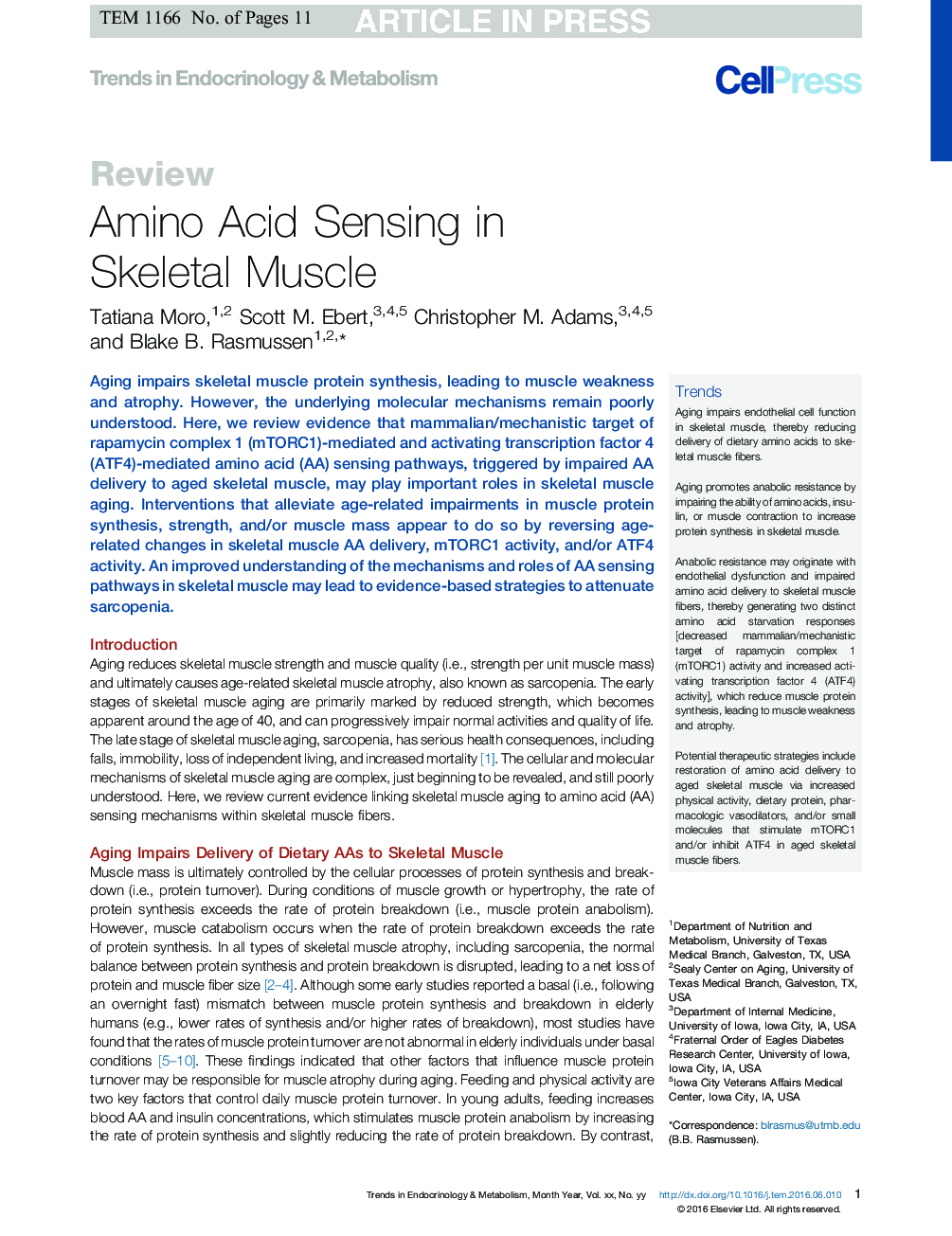| Article ID | Journal | Published Year | Pages | File Type |
|---|---|---|---|---|
| 5588854 | Trends in Endocrinology & Metabolism | 2016 | 11 Pages |
Abstract
Aging impairs skeletal muscle protein synthesis, leading to muscle weakness and atrophy. However, the underlying molecular mechanisms remain poorly understood. Here, we review evidence that mammalian/mechanistic target of rapamycin complex 1 (mTORC1)-mediated and activating transcription factor 4 (ATF4)-mediated amino acid (AA) sensing pathways, triggered by impaired AA delivery to aged skeletal muscle, may play important roles in skeletal muscle aging. Interventions that alleviate age-related impairments in muscle protein synthesis, strength, and/or muscle mass appear to do so by reversing age-related changes in skeletal muscle AA delivery, mTORC1 activity, and/or ATF4 activity. An improved understanding of the mechanisms and roles of AA sensing pathways in skeletal muscle may lead to evidence-based strategies to attenuate sarcopenia.
Keywords
Related Topics
Life Sciences
Biochemistry, Genetics and Molecular Biology
Endocrinology
Authors
Tatiana Moro, Scott M. Ebert, Christopher M. Adams, Blake B. Rasmussen,
